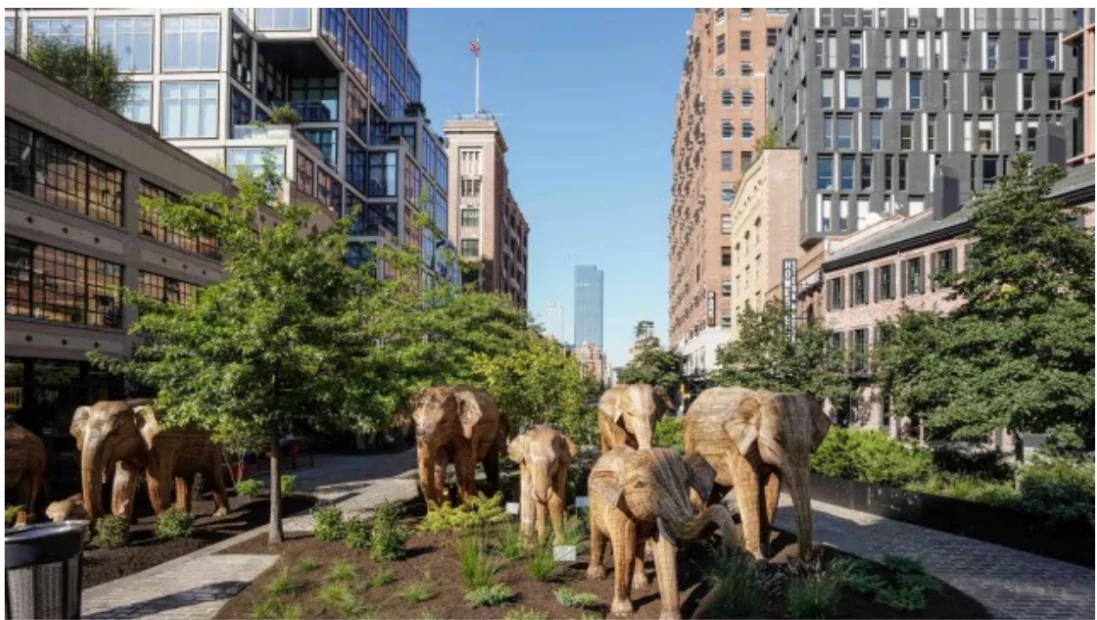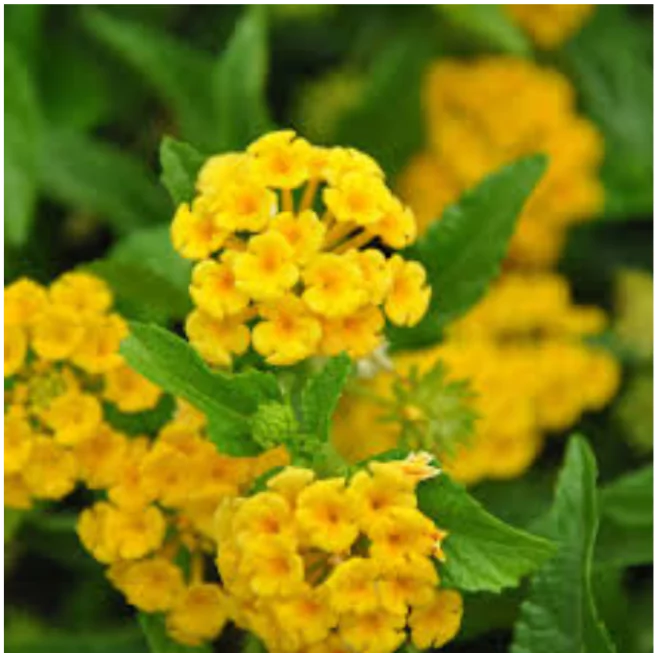The Great Elephant Migration, a public art installation has made its way from Gudalur in Tamil Nadu’s Nilgiri hills to New York USA

- Design: The Installation is the brainchild of a UK-based conservation group, Elephant Family USA.
- Conceptualised: The Sculptures are being conceptualised by Gudalur-based The Real Elephant Collective (TREC).
- Focus: The installation aims to highlight the importance of human-wildlife coexistence and the need to draw attention and finances for the protection of Asian elephants.
- Material Used : These elephants are sculpted from boiled Lantana (one of the 10 worst invasive plant species in the world) by 200 tribal artisans from the Nilgiris, who make up the Coexistence Collective
- Tribes Associated: Artisans from the Soliga, Betta Kurumba, Kattunayakan and Paniya tribes came together and made these idols.
Enroll now for UPSC Online Classes
About Lantana Camara
- Lantana camara (common lantana) is a species of flowering plant within the verbena family (Verbenaceae)
 It is a perennial, erect sprawling shrub which typically grows to around 2 meters (6+1⁄2 feet) tall
It is a perennial, erect sprawling shrub which typically grows to around 2 meters (6+1⁄2 feet) tall - Native: American Tropics.
- Range: Lantana can inhabit a wide variety of ecosystems between 45ºN and 45ºS and grows in areas less than 1,400 metres (4,600 feet) in altitude.
- Invasive Species: Lantana multiply rapidly once its been introduced into a habitat and has spread from its native range to around 50 countries
- In India: It was brought to India by the British as an ornamental plant in the 1800s.
- Threats:
- Invasive Growth: According to a study in the Journal of Applied Ecology in October 2023, Lantana has penetrated over 5,74,186 sq km of India, including 50 per cent of the country’s natural areas.
- Vulnerable Areas: These are dry deciduous forests (including all of northern India upto the sub-Himalayan zone), all of Central India, parts of the arid zone in the west excluding the Thar desert and along the Eastern Ghats
- Toxicity: It can also cause problems if it invades agricultural areas as a result of its toxicity to livestock
- Pushing out Native Plant Species: Lantana is a fast-growing and toxic plant. It completely mattifies the forest and does not allow for growth of any other plant species.
- Food Scarcity for Animals: Animals are pushed out of forests into urban areas as lantana deprives them of their food sources and reduces forage for wild ungulates (animals with hoofs).
- Forest Fires: Lantana goes up trees, forest fires become more widespread.
Check Out UPSC NCERT Textbooks From PW Store
![]() 13 Sep 2024
13 Sep 2024

 It is a perennial, erect sprawling shrub which typically grows to around 2 meters (6+1⁄2 feet) tall
It is a perennial, erect sprawling shrub which typically grows to around 2 meters (6+1⁄2 feet) tall 